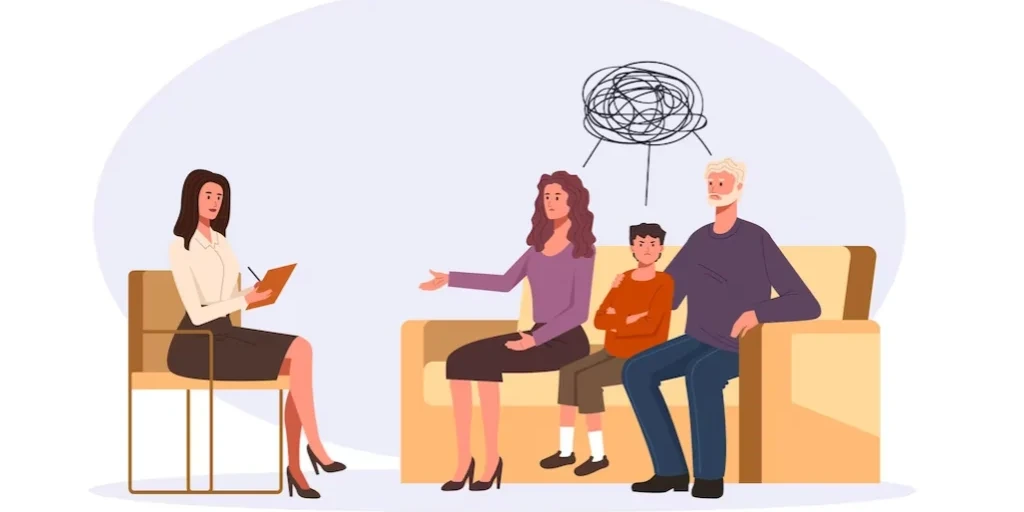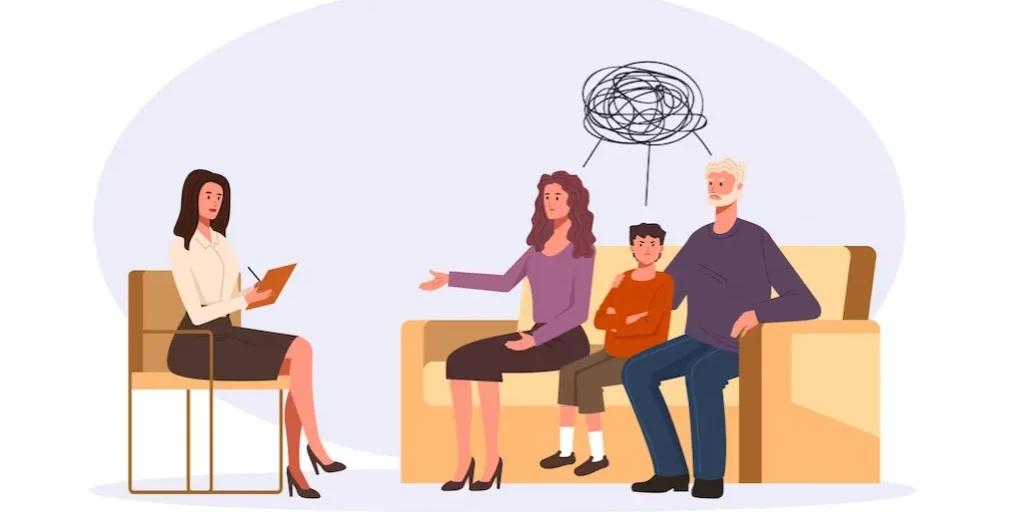24/7 Helpline:
(866) 899-221924/7 Helpline:
(866) 899-2219
Learn more about Cocaine Rehab centers in California
Cocaine Rehab in Other Cities

Other Insurance Options

Medical Mutual of Ohio

UnitedHealth Group

Absolute Total Care

ComPsych

AllWell

Health Choice

Health Partners
Beacon

Evernorth

Amerigroup

Highmark

Optima

Humana

Holman Group

Cigna

Oxford

Private insurance

Magellan Health

Ambetter

Magellan



The Ranch
The Ranch is located on 204 beautiful, rural acres in Frederick County, Maryland. The model is new t...

Chance Center
Chance Center is a private rehab located in Baltimore, Maryland. Chance Center specializes in the tr...

Right Turn of Maryland
Right Turn of Maryland is a CARF-accredited substance abuse treatment center in Eldersburg, MD. Root...

Tuerk House
Situated in Baltimore, Maryland, Tuerk House is a drug and alcohol rehab for adults with substance u...

Phoenix Recovery Center
Phoenix Recovery Center is located in Edgewood, Maryland. Phoenix Recovery Center offers a supervise...

Avenues Recovery Center at Eastern Shore
Avenues Recovery at Eastern Shore is a community based residential style extended care program locat...

The Freedom Center
The Freedom Center is a CARF-accredited dual-diagnosis treatment center located in Gaithersburg, MD....

House of Change
House of Change is a private rehab located in Baltimore, Maryland. House of Change specializes in th...

Montgomery County Medication Assisted Treatment Program
Montgomery County Medication Assisted Treatment Program is a private rehab located in Rockville, Mar...

Turning Corners
Turning Corners offers outpatient services for individuals that are struggling with a Substance Addi...

People Encouraging People
People Encouraging People is a private rehab located in Rockville, Maryland. People Encouraging Peop...

Treatment Resources for Youth
Treatment Resource for Youth is a non-profit, adolescent centered substance abuse facility with nume...

Columbia Addictions Center
Columbia Addictions Center (CTC) is a substance abuse addiction rehab in Columbia, MD for adolescent...

Homecoming Project
Homecoming Project is an 8 bed, abstinence based, non-profit recovery residence located in Bel Air, ...

Catoctin Counseling Center
Catoctin Counseling Center - East Washington Street offers outpatient treatment for individuals with...

Community Behavioral Health
Community Behavioral Health is a private rehab located in Cambridge, Maryland. Community Behavioral ...

By Grace – Counseling
By Grace – Counseling is a private rehab located in Baltimore, Maryland. By Grace – Counseling speci...

Assisted Recovery Centers of America Mid – Atlantic
Assisted Recovery Centers of America Mid-Atlantic is a private, traditional rehab located in Bel Air...

Oxford House Serenity Lane
Oxford House Catalyst is a non-profit house located in Montgomery, AL. The Oxford House has a unique...

Recovery Centers of America – Bracebridge Hall
Recovery Centers of America – Bracebridge Hall is a substance use disorder treatment center located ...

Maryland House Detox
Maryland House Detox offers inpatient services for those individuals in need of detoxification. Mary...

Maryland Addiction Recovery Center
Maryland Addiction Recovery Center (MARC) is a CARF-accredited addiction treatment rehab in Towson, ...

Calvert County Behavioral Health Department
Calvert County Behavioral Health Department offers outpatient services for substance abuse and co-oc...

Addiction Recovery Services
Addiction Recovery Systems provides Medication Assisted Treatment, Outpatient Treatment, DUI/DWI Cla...

Helping Up Mission
Helping Up Mission, located in Baltimore, Maryland, offers a wide variety of mental health support, ...

A New Way Clinic
A New Way Clinic is a State Certified Program offering a variety of services for those suffering wit...

Tranquility Woods Treatment
Tranquility Woods Treatment is a drug and alcohol rehab located in Pasadena, MD. They provide reside...

Caroline Counseling Center
Caroline Counseling Center is a public counseling clinic located in Denton, MD. Caroline Counseling ...

Recovery Centers of America Capital Region
Recovery Centers of America (RCA) Capital Region in Waldorf, MD is a CARF-accredited addiction treat...

Mosaic Community Services
Mosaic Community Services provides mental health and substance abuse assessments, individual and gro...

John Hopkins Broadway Center for Addiction
Located in Baltimore, Maryland, John Hopkins Broadway Center provides alcohol and drug rehab service...

Fresh Start Recovery Center
Fresh Start Recovery Center helps men and women suffering from substance-use disorders achieve long-...

Phoenix Health Center
Phoenix Health Center is a private rehab located in Hagerstown, Maryland. Phoenix Health Center spec...

Recovery Network – 25th Street
Recovery Network on 25th Street is a subsidiary of the University Psychological Center in Baltimore,...

Kent County Behavioral Health – A. F. Whitsitt Center
Kent County Behavioral Health is an accredited dual diagnosis and addiction rehab center located in ...

Crossroads Center
Crossroads Center is located in Frederick, Maryland. Crossroads Center provides professional care fo...

The Baltimore Station
The Baltimore Station is an innovative therapeutic residential treatment program supporting veterans...

New Life for Girls
New Life for Girls is an inpatient faith-based program for women located in Westminster, MD. New Lif...

Harbel Prevention and Recovery Center – Adult Clinic
Harbel Prevention and Recovery Center, situated in Baltimore, Maryland, is an addiction treatment ce...

UM Harford Memorial Hospital – Inpatient and Outpatient
UM Harford Memorial Hospital – Inpatient and Outpatient is a private rehab located in Havre De Grace...

Mountain Manor Treatment Center
Mountain Manor Treatment Center is located in Emmitsburg, Maryland. Mountain Manor Treatment Center ...

Upper Bay Counseling and Support Services
Upper Bay Counseling and Support Services is a private rehab located in Elkton, Maryland. Upper Bay ...

Recovery Center
Recovery Center is a private rehab located in Westminster, Maryland. Recovery Center specializes in ...

Act II Counseling Services
We are a privately owned local substance abuse outpatient rehab facility. Our staff has over 30+ yea...

Foundations Psychiatric Rehabilitation
Foundations Psychiatric Rehabilitation is a private rehab located in Linthicum Heights, Maryland. Fo...

SRR Treatment Solutions – Treatment Solutions
SRR Treatment Solutions – Treatment Solutions is a private rehab located in Columbia, Maryland. SRR ...

Avery House Halfway House for Women and Children
Chrysalis House is an accredited dual diagnosis substance use disorder center in Crownsville, MD for...

A Helping Hand Health Services
A Helping Hand Health Services is a private rehab located in Pikesville, Maryland. A Helping Hand He...

The Jude House
The Jude House, in Bel Alton, Maryland, is a 12 step focused drug and alcohol rehab for adults. They...

Safe Journey House
Safe Journey House is a private rehab located in Hyattsville, Maryland. Safe Journey House specializ...

Avenues Recovery Center at Prince Frederick
A unique community-based residential style 60-day program that’s truly customized to the needs and u...

Metropolitan Mental Health Clinic
Metropolitan Mental Health Clinic is a private rehab located in Upper Marlboro, Maryland. Metropolit...

EJAL Health Services
EJAL Health Services is a private traditional rehab located in Glen Burnie, Maryland. EJAL Health Se...

UM SRH – Requard Center for Acute Rehabilitation
UM SRH – Requard Center for Acute Rehabilitation is a private rehab located in Easton, Maryland. UM ...

Metro Counseling
Metro Counseling is a private rehab located in Derwood, Maryland. Metro Counseling specializes in th...

Community Behavioral Health
Community Behavioral Health is a private rehab located in Salisbury, Maryland. Community Behavioral ...

Easton Treatment Solutions
Easton Treatment Solutions is a private rehab located in Easton, Maryland. Easton Treatment Solution...

Maryland Recovery
Maryland Recovery is a co-occurring mental health and substance abuse rehab facility located in Bel ...

Baltimore Crisis Response
Baltimore Crisis Response is a private rehab located in Baltimore, Maryland. Baltimore Crisis Respon...

Martha’s Place
Martha’s Place, located in Baltimore, Maryland, is a gender-specific treatment center offering alcoh...

Pine Heights Treatment Center
Pine Heights Treatment Center offers outpatient treatment for individuals with opiate addiction. The...

Glenwood Life Counseling Center
Glenwood Life Counseling Center is a private rehab located in Baltimore, Maryland. Glenwood Life Cou...

Howard County Behavioral Health
Howard County Behavioral Health is a public rehab located in Columbia, Maryland. Howard County Behav...

DeVaughn Intervention Teach & Treat Options – DITTO
DeVaughn Intervention Teach & Treat Options – DITTO is a non-profit rehab located in Baltimore, Mary...

Kolmac Outpatient Recovery Centers
Kolmac Outpatient Recovery Centers provide outpatient detoxification, rehabilitation, and continuing...

Mosaic Community Services
Mosaic Community Services provides mental health and substance abuse assessments, individual and gro...

Reflective Treatment Center
Reflective Treatment Center is a private rehab located in Baltimore, Maryland. Reflective Treatment ...

John Hopkins – Children’s Mental Health Center
John Hopkins - Children’s Mental Health Center, located in Baltimore, Maryland, provides a wide vari...

Baltimore Recovery Center
Baltimore Recovery Center is a private rehab located in Baltimore, Maryland. Baltimore Recovery Cent...

Open Armms
Open Armms is a private rehab located in Waldorf, Maryland. Open Armms specializes in the treatment ...

Adventist HealthCare Behavioral Health and Wellness Services
Adventist HealthCare Behavioral Health and Wellness Services - Broschart Road is located in Rockvill...

Cornerstone Montgomery – The Taft Court Center
Cornerstone Montgomery – The Taft Court Center is a private rehab located in Rockville, Maryland. Co...

Arundel Lodge
Arundel Lodge is a non profit organization that works toward a world where behavioral health disorde...

Lawrence Court Halfway House
Lawrence Court Halfway House is a low-intensity residential substance use disorder treatment facilit...

Joppa Health Services
Joppa Health Services is a private rehab located in Joppa, Maryland. Joppa Health Services specializ...

Suburban Hospital – Behavioral Health Services
Suburban Hospital- Behavioral Health Services, located in Bethesda, Maryland, provides comprehensive...

Outlook Recovery
Outlook Recovery is a private rehab located in Callaway, Maryland. Outlook Recovery specializes in t...

JR Healthcare – Behavioral Health
JR Healthcare – Behavioral Health is a private rehab located in Baltimore, Maryland. JR Healthcare –...

Mosaic Community Services
Mosaic Community Services provides mental health and substance abuse assessments, individual and gro...

Cambridge VA Outpatient Clinic
Cambridge VA Outpatient Clinic is a public clinic that is located in Cambridge, MD. Cambridge VA Out...

Hope House
Situated in Laurel, Maryland, Hope House is a drug and alcohol treatment center that supports adults...

People Encouraging People
People Encouraging People, located in Baltimore, Maryland, provided alcohol and drug rehab programmi...

Mountain Manor Outpatient Services – Carroll Plaza
Mountain Manor Outpatient Services - Carroll Plaza is located in Westminster, Maryland. Mountain Man...

Montgomery County Adolescent Mental Health Services
Montgomery County Adolescent Mental Health Services is a public rehab located in Silver Spring, Mary...

Bridges Behavioral Health and Wellness
Bridges Behavioral Health and Wellness is a private rehab located in Centreville, Maryland. Bridges ...

Volunteers of America Chesapeake
VOAC - Baldwin Lane offers inpatient services for individuals with a mental health diagnosis. The pr...

Institutes for Behavior Resources – Outpatient
Institutes for Behavior Resources – Outpatient is a private rehab located in Baltimore, Maryland. In...

Vesta
Vesta is a private rehab located in Lexington Park, Maryland. Vesta specializes in the treatment of ...

Drug and Alcohol Wynne and Associates
Drug and Alcohol Wynne and Associates provides counseling services for people on chemical dependency...

MRB Counseling Services – Gaithersburg
MRB Counseling Services – Gaithersburg is a private rehab located in Gaithersburg, Maryland. MRB Cou...

Essential Therapeutic Perspectives
Essential Therapeutic Perspectives is a private rehab located in Hyattsville, Maryland. Essential Th...

Gaudenzia – Park Heights
Gaudenzia Park Heights offers adults struggling with substance abuse and dual diagnosis mental healt...

New Vision House of Hope
New Vision House of Hope is a non-profit located in Baltimore City. New Vision House of Hope special...

Villa Maria of Carroll County BHS
Villa Maria of Carroll County BHS is a private rehab located in Westminster, Maryland. Villa Maria o...

Champ House Recovery
Champ House Recovery is a residential program for men located in Bowie, Maryland. Champ House Recove...

Ferry Point Treatment Center
Ferry Point Treatment Center is a private traditional rehab located in Odenton, MD. Ferry Point Trea...

Partners in Recovery
Partners in Recovery is a private rehab located in Annapolis, Maryland. Partners in Recovery special...

Step N 2 Recovery Services
Step N 2 Recovery Services is a private rehab located in Prince Frederick, Maryland. Step N 2 Recove...

Counseling Plus
Counseling Plus is a private rehab located in Silver Spring, Maryland. Counseling Plus specializes i...

Cornerstone Montgomery – The Southport Center
Cornerstone Montgomery - The Southport Center provides mental health treatment and dual diagnosis tr...

Upper Bay Counseling and Support Services – Community Services
Upper Bay Counseling and Support Services – Community Services is a private rehab located in Elkton,...

Bon Secours – ADAPT Cares
Bon Secours - ADAPT Cares is a substance abuse treatment program providing community-based outpatien...

Family Health Centers of Baltimore – Community Recovery
Family Health Centers of Baltimore – Community Recovery is a public rehab located in Baltimore, Mary...

Mountain Manor – Avery Road Treatment Center (ARTC)
Avery Road Treatment Center in Rockville, Maryland, provides alcohol and drug addiction rehabilitati...

MedMark Treatment Centers
MedMark Treatment Centers offers outpatient treatment for individuals with an opiate addiction. MedM...

ADI – Alcohol and Drug Intervention
ADI – Alcohol and Drug Intervention is a private rehab located in Glen Burnie, Maryland. ADI – Alcoh...

MRB Counseling Services – Frederick
MRB Counseling Services – Frederick is a private rehab located in Frederick, Maryland. MRB Counselin...

Montgomery Recovery Services
Montgomery Recovery Services is a private rehab located in Rockville, Maryland. Montgomery Recovery ...

Chesapeake Counseling Services
Chesapeake Counseling Services is a private rehab located in Essex, Maryland. Chesapeake Counseling ...

Wells House – 124 East Baltimore street
Wells House is a co-occurring mental health and substance abuse facility based in Hagerstown, MD. Re...

Medstar Behavioral Health Services
Medstar Behavioral Health Services is a private rehab located in Clinton, Maryland. Medstar Behavior...

Three Lower County Community Services
Three Lower County Community Services is a private rehab located in Salisbury, Maryland. Three Lower...

Northern Parkway Treatment Services
Northern Parkway Treatment Services is a private rehab located in Baltimore, MD. Northern Parkway Tr...

Key Point Health Services – Outpatient
Key Point Health Services – Outpatient is a private rehab located in Aberdeen, Maryland. Key Point H...

Aspen Day Treatment – Adults
Aspen Day Treatment – Adults is a private rehab located in Halethorpe, Maryland. Aspen Day Treatment...

Alternatives to Dependency
Alternatives to Dependency is an outpatient substance abuse facility that provides services to child...

BH Health Services
BH Health Services is a private rehab located in Westminster, Maryland. BH Health Services specializ...

Frederick County Addictions Services
Frederick County Addictions Services is a private rehab located in Frederick, Maryland. Frederick Co...

Baltimore Behavioral Health
Baltimore Behavioral Health is a private rehab located in Baltimore, Maryland. Baltimore Behavioral ...

Apex Counseling Center
Apex Counseling Center is a private rehab located in Baltimore, Maryland. Apex Counseling Center spe...

Vesta
Vesta is a private rehab located in Silver Spring, Maryland. Vesta specializes in the treatment of d...

Serenity Treatment Center
Serenity Treatment Center is a private rehab located in Frederick, Maryland. Serenity Treatment Cent...

Vesta
Vesta is a private rehab located in Lanham, Maryland. Vesta specializes in the treatment of dual dia...

A Step Forward
Located in Baltimore, Maryland, A Step Forward provides alcohol and drug rehab services, along with ...

Peninsula Addiction Services
Peninsula Addiction Services offers outpatient services for individuals with alcohol and/or substanc...

Omni House – Mental Health
Omni House – Mental Health is a private rehab located in Glen Burnie, Maryland. Omni House – Mental ...

Damascus House
Damascus House is a non-profit rehab located in Brooklyn, Maryland. Damascus House specializes in th...

Man Alive Lane Treatment Center
Man Alive Lane Treatment Center is a private rehab located in Baltimore, Maryland. Man Alive Lane Tr...

Building Communities Today for Tomorrow
Building Communities Today for Tomorrow is a private rehab located in Baltimore, Maryland. Building ...

ADAC – Alternative Drug and Alcohol Counseling
ADAC- Alternative Drug and Alcohol Counseling is a private, traditional rehab located in Hagerstown,...

Upper Bay Counseling and Support Services
Upper Bay Counseling and Support Services is a private rehab located in Havre De Grace, Maryland. Up...

CAM Center for Addiction Medicine
CAM Center for Addiction Medicine is a drug and alcohol rehab located in Baltimore, Maryland. They p...

Mountain Manor Treatment Centers
Mountain Manor Treatment Center is an all inclusive rehab that offers substance abuse services in Ma...

Gaudenzia – Woodland
Gaudenzia is an accredited dual diagnosis substance use disorder drug rehab facility in Baltimore, M...

Center for Therapeutic Concepts
Center for Therapeutic Concepts is a private rehab located in Upper Marlboro, Maryland. Center for T...

Pathways – 44065 Airport View Drive
Pathways - 44065 Airport View Drive offers outpatient services for individuals with mental health di...

Western Maryland Recovery Services
Western Maryland Recovery Services is a private rehab located in Cumberland, Maryland. Western Maryl...

Ashley Addiction Treatment
Ashley Addiction Treatment is an alcohol and drug addiction treatment center, in Havre De Grace, Mar...

MedMark Treatment Centers – North Calvert Street
MedMark Treatment Centers - North Calvert Street offers outpatient treatment for individuals with an...

Adventist HealthCare Behavioral Health and Wellness Services – Peninsula Regional Medical Center
Adventist HealthCare Behavioral Health and Wellness Services - Peninsula Regional Medical Center off...

Adventist Behavioral Health Manor
Adventist Behavioral Health Manor is located in Takoma Park, Maryland. At Adventist Behavioral Healt...

Hudson Health Services – Broad Street Halfway House
Hudson Health Services - Broad Street Halfway House is located in Salisbury, Michigan. Hudson Health...

Health Care for the Homeless – Downtown
Health Care for the Homeless - Downtown is located in Baltimore, Maryland. Health Care for the Homel...

Health Care for the Homeless – West Baltimore
Health Care for the Homeless - West Baltimore is located in Baltimore, Maryland. Health Care for the...

Health Care for the Homeless – Baltimore County
Health Care for the Homeless - Baltimore County is located in Baltimore, Maryland. Health Care for t...

Eastern Shore Psychological Services
Eastern Shore Psychological Services at Salisbury is a private for Profit Limited Liability Company ...

Austin Addiction and Mental Health Center
Austin Addiction and Mental Health Center is located in Frederick, Maryland. Austin Addiction and Me...

Catoctin Counseling Center
Catoctin Counseling Center - 309 E. Patrick St. offers outpatient treatment for individuals with alc...

Weber Sober Homes – Stonewall House
Weber Sober Homes - Stonewall House offers a halfway house for those men in recovery from drugs and ...

Sandstone Care
Sandstone Care is a drug and alcohol addiction rehabilitation center in Rockville, Maryland, serving...

New Season – Hagerstown Treatment Center
New Season - Hagerstown Treatment Center is a private rehab located in Hagerstown, MD. New Season - ...

For All Seasons
For All Seasons provides a full continuum of bilingual outpatient behavioral health services and off...

For All Seasons
For All Seasons provides a full continuum of bilingual outpatient behavioral health services and off...

For All Seasons
For All Seasons provides a full continuum of bilingual outpatient behavioral health services and off...

Drug and Alcohol Wynne and Associates
Drug and Alcohol Wynne and Associates provides counseling services for people on chemical dependency...

Martinsburg VA Medical Center – Fort Detrick Community Based Outpatient Clinic
Martinsburg VA Medical Center - Fort Detrick Community Based Outpatient Clinic is specialized in men...

Volunteers of America Chesapeake’s Residential ReEntry Center
Volunteers of America Chesapeake’s Residential ReEntry Center is a non-profit rehab located in Balti...

Frederick Rescue Mission
Frederick Rescue Mission is a non-profit Christ-centered residential life recovery program located i...

Regain Hope
Regain Hope is a public rehab located in Baltimore, Maryland. Regain Hope specializes in the treatme...

Healthy Lives
Healthy Lives is a private rehab located in Baltimore, Maryland. Healthy Lives specializes in the tr...

Ryan Rehabilitation
Ryan Rehabilitation is a private rehab located in College Park, Maryland. Ryan Rehabilitation specia...

Concerted Care Group Frederick
Concerted Care Group Frederick is a private rehab located in Frederick, Maryland. Concerted Care Gro...

Maryland Wellness and Recovery
Maryland Wellness and Recovery is a private rehab located in Bethesda, Maryland. Maryland Wellness a...

The Bergand Group
The Bergand Group is a private rehab located in Lutherville Timonium, Maryland. The Bergand Group sp...

Hope’s Horizon
Located in Perry Hall, Maryland, Hope’s Horizon is an alcohol and drug rehab organization. They offe...

Outreach Dimensions
Outreach Dimensions is a private rehab located in Bowie, Maryland. Outreach Dimensions specializes i...

Healthy Foundations Group
Healthy Foundations Group is a private rehab located in Bethesda, Maryland. Healthy Foundations Grou...

Second Chance Addiction Care
Second Chance Addiction Care is a private rehab located in Potomac, Maryland. Second Chance Addictio...

Newport Academy
Newport Academy, located in Rockville, Maryland, provides addiction treatment through alcohol and dr...

MedMark Treatment Centers Cherry Hill
MedMark Treatment Centers Cherry Hill is a private rehab located in Baltimore, Maryland. MedMark Tre...

Addiction Treatment of Maryland
Addiction Treatment of Maryland is a CARF accredited dual diagnosis alcohol and drug rehab center lo...
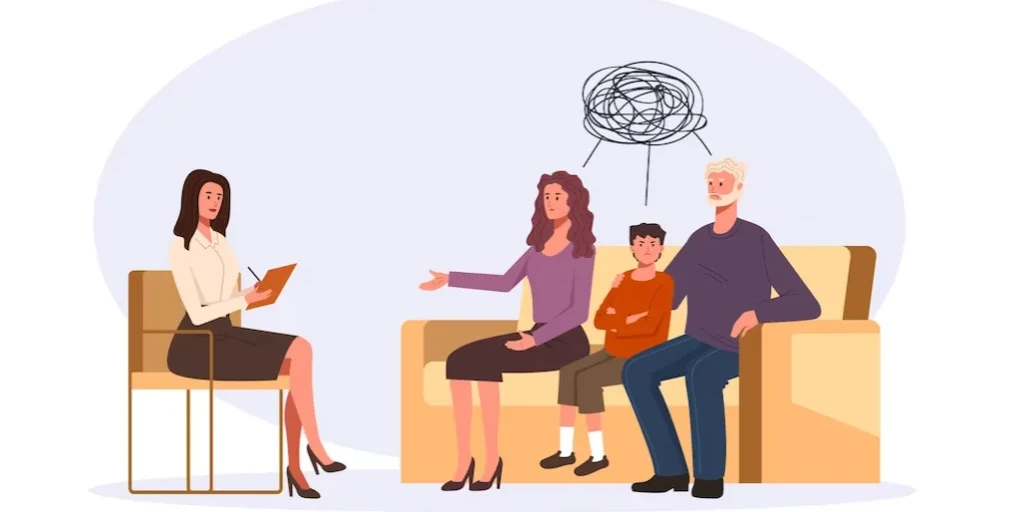
Amatus Recovery Centers
Amatus Recovery Centers is a private rehab located in Owings Mills, Maryland. Amatus Recovery Center...

Balance Point Wellness – Baltimore
Balance Point Wellness, LLC is a community based holistic mental health and wellness center that pro...

Awakenings Recovery Center
Awakenings Recovery Center, in Hagerstown, Maryland, is an integrative drug and alcohol rehab for ad...
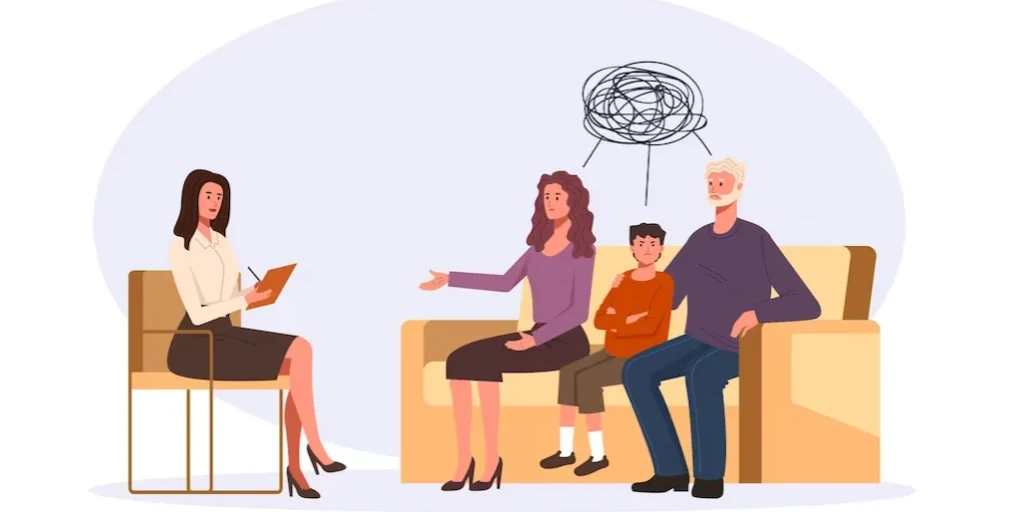
Addiction Healing Center at the Westminster Rescue Mission
At Westminster Rescue Mission, they believe that everyone is capable of recovery and that this is pr...

Behavioral Health Partners of Frederick – Family Center
Behavioral Health Partners of Frederick – Family Center is a private rehab located in Frederick, Mar...

Behavioral Health Partners of Frederick – Main Center
Behavioral Health Partners of Frederick – Main Center is a private rehab located in Frederick, Maryl...

Sheppard Pratt Outpatient Mental Health Clinic – Columbia
Sheppard Pratt Outpatient Mental Health Clinic – Columbia is a private rehab located in Columbia, Ma...

Outpatient Mental Health Clinic – Gaithersburg
Outpatient Mental Health Clinic – Gaithersburg is a private rehab located in Gaithersburg, Maryland....

Sheppard Pratt – Outpatient Mental Health Clinic – Hagerstown
Sheppard Pratt – Outpatient Mental Health Clinic – Hagerstown is a private rehab located in Hagersto...

Sheppard Pratt – Psychiatric Rehabilitation Day Program – Catonsville
Sheppard Pratt – Psychiatric Rehabilitation Day Program – Catonsville is a private rehab located in ...

Sheppard Pratt – Psychiatric Rehabilitation Day Program – Gaithersburg
Sheppard Pratt – Psychiatric Rehabilitation Day Program – Gaithersburg is a private rehab located in...

Sheppard Pratt Integrated Behavioral Health at GBMC – Hunt Manor
Sheppard Pratt Integrated Behavioral Health at GBMC – Hunt Manor is a private rehab located in Phoen...

Sheppard Pratt Integrated Behavioral Health at GBMC – Hunt Valley
Sheppard Pratt Integrated Behavioral Health at GBMC – Hunt Valley is a private rehab located in Cock...

Sheppard Pratt Integrated Behavioral Health at GBMC – Jarrettsville
Sheppard Pratt Integrated Behavioral Health at GBMC – Jarrettsville is a private rehab located in Ja...

Sheppard Pratt Integrated Behavioral Health at GBMC – Joppa Road
Sheppard Pratt Integrated Behavioral Health at GBMC – Joppa Road is a private behavioral health trea...

Sheppard Pratt Integrated Behavioral Health at GBMC – Owings Mills
Sheppard Pratt Integrated Behavioral Health at GBMC – Owings Mills is a private rehab located in Owi...

Sheppard Pratt Integrated Behavioral Health at GBMC – Perry Hall
Sheppard Pratt Integrated Behavioral Health at GBMC – Perry Hall is a private rehab located in Balti...

Sheppard Pratt Integrated Behavioral Health at GBMC – Texas Station
Sheppard Pratt Integrated Behavioral Health at GBMC – Texas Station is a private rehab located in Lu...

Serenity Outpatient Services – SOS
Serenity Outpatient Services is a multi-disciplinary addiction treatment facility located in Upper M...

Kolmac Outpatient Recovery Centers
Kolmac Outpatient Recovery Centers is a private rehab located in Frederick, Maryland. Kolmac Outpati...

Kolmac Outpatient Recovery Centers
Kolmac Outpatient Recovery Centers is a private rehab located in Lanham, Maryland. Kolmac Outpatient...

Kolmac Clinic
Kolmac Clinic is a public rehab located in Burtonsville, Maryland. Kolmac Clinic specializes in the ...

Recovery Center Of USA
Recovery Center Of USA is a rehab facility located in Baltimore, MD. Recovery Center Of USA speciali...

Sandstone Care – Baltimore
Sandstone Care Baltimore is a treatment center for teens and young adults struggling with substance ...

Sandstone Care Teen Center at Chesapeake
Sandstone Care Chesapeake is a residential treatment center designed specifically for teens (ages 13...

CBH Snow Hill: Worcester County
CBH Snow Hill: Worcester County is a public rehab located in Snow Hill, Maryland. CBH Snow Hill: Wor...

CBH Centreville: Queen Anne’s County
CBH Centreville: Queen Anne’s County is a public rehab located in Centreville, Maryland. CBH Centrev...

CBH Cambridge: Dorchester County
CBH Cambridge: Dorchester County is a public rehab located in Cambridge, Maryland. CBH Cambridge: Do...

Riverside Treatment Services LLC Lansdowne
Riverside Treatment Services LLC Lansdowne is a private rehab located in Baltimore, Maryland. Rivers...

Misha House Baltimore
Misha House Baltimore is a non-profit rehab located in Baltimore, Maryland. Misha House Baltimore sp...

B.N.J. Health Services
B.N.J. Health Services is a private rehab located in Baltimore, Maryland. B.N.J. Health Services spe...

MRB Counseling Services – Hyattsville
MRB Counseling Services – Hyattsville is a private rehab located in Hyattsville, Maryland. MRB Couns...

Safe House
Safe House is a private rehab located in Baltimore, MD. Safe House have an inpatient, medically assi...

QCI of Southern Maryland
QCI of Southern Maryland is a private rehab located in White Plains, Maryland. QCI of Southern Maryl...

Focus on Recovery
Focus on Recovery is a private rehab located in Baltimore, MD. Focus on Recovery specializes in the ...

Mann House
Mann House is a non-profit rehab located in Bel Air, Maryland. Mann House specializes in the treatme...

Talbot County Health Department – Addictions Program
Talbot County Health Department – Addictions Program is a public rehab located in Easton, Maryland. ...

The W House Foundation
The W House Foundation is a non-profit rehab located in Hagerstown, Maryland. The W House Foundation...

Ashley Addiction Treatment – Upper Chesapeake Medical Center
Ashley Addiction Treatment - Upper Chesapeake Medical Center is located in Bel Air, Maryland. Ashley...

Addiction Treatment Services
Addiction Treatment Services is a private rehab located in Baltimore, Maryland. Addiction Treatment ...

Huber and Associates Counseling
Huber and Associates Counseling is a private rehab located in Baltimore, Maryland. Huber and Associa...

MedMark Treatment Centers
MedMark Treatment Centers offers outpatient treatment for individuals with an opiate addiction. MedM...

Belair Road Health Solutions
Belair Road Health Solutions is a private rehab located in Baltimore, Maryland. Belair Road Health S...

Renaissance Treatment Center
Renaissance Treatment Center is a non-profit rehab located in Capitol Heights, Maryland. Renaissance...

Samaritan House
Samaritan House is a private rehab located in Annapolis, Maryland. Samaritan House specializes in th...

MedMark Treatment Centers
MedMark Treatment Centers offers outpatient treatment for individuals with an opiate addiction. MedM...

Starting Point
Starting Point Clinic is a private rehab located in Brooklyn, MD. Starting Point Clinic specializes ...

Carroll County Youth Service
Carroll County Youth Service is a private rehab located in Westminster, Maryland. Carroll County You...

Life Renewal Services
Life Renewal Services is a private rehab located in Windsor Mill, Maryland. Life Renewal Services sp...

Life Spring Counseling
Life Spring Counseling is a private rehab located in Hyattsville, Maryland. Life Spring Counseling s...

Empowering Minds Resource Center
Empowering Minds Resource Center provides direct mental health, substance abuse and community suppor...

Kolmac Outpatient Recovery Centers
Kolmac Outpatient Recovery Centers provide outpatient detoxification, rehabilitation, and continuing...

The Baltimore Station – Baker Street
The Baltimore Station - Baker Street is an innovative therapeutic residential treatment program supp...

Marian House
Marian House is a transitional housing and rehabilitation program that provides support services suc...

Project Chesapeake
Project Chesapeake is a private addiction, substance abuse, and mental health counseling organizatio...

Project Chesapeake
Project Chesapeake is a private addiction, substance abuse, and mental health counseling organizatio...

Project Chesapeake
Project Chesapeake is a private addiction, substance abuse, and mental health counseling organizatio...

Project Chesapeake
Project Chesapeake is a private addiction, substance abuse, and mental health counseling organizatio...

REK Advanced Therapeutic Solutions
REK Advanced Therapeutic Solutions its an Intensive Outpatient and Outpatient facility that offers t...

Recovery Network
Recovery Network provides a unique opportunity for integrated treatment for those who are facing co-...

Family Services – Step Ahead
Family Services - Step Ahead provides quality outpatient substance abuse treatment and education for...

Family Services – Outpatient Mental Health Center
Family Services - Outpatient Mental Health Center provides individual, group and family therapy, and...

Resource Group
Resource Group offers mental health and substance abuse services for individuals in need. They utili...
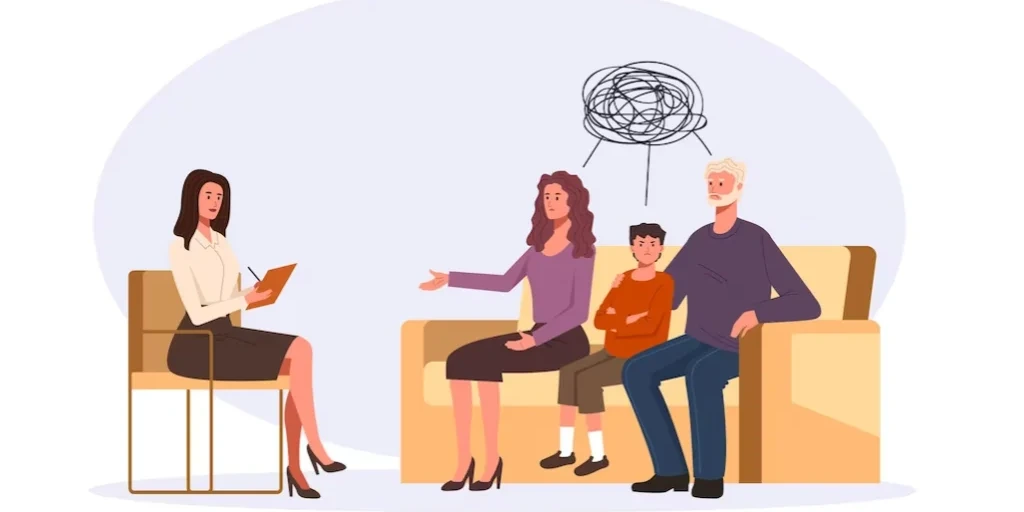
Catoctin Summit Adolescent Program – CSAP
Catoctin Summit Adolescent Program of the Washington County Health Department is a publicly funded r...

Hope’s Horizon
Hope’s Horizon stands as a CARF-accredited family-focused alcohol and drug treatment center in Perry...

Good Shepherd Services
Good Shepherd Services is a private rehab located in Halethorpe, Maryland. Good Shepherd Services sp...

Addictions Counseling Services
Addictions Counseling Services is a private rehab located in Pikesville, MD. Addictions Counseling S...

Frederick County Mental Health
Frederick County Mental Health offers outpatient treatment for individuals with alcohol and/or subst...

The Regional Mid Shore Mental Health Services
The Regional Mid Shore Mental Health Services is a public rehab located in Denton, Maryland. The Reg...

Weber Sober Homes – Joey V House
Weber Sober Homes- Joey V House, located in Westminster, Maryland, offers a halfway house for men in...

Pathways – 44101 Airport View Drive
Pathways - 44101 Airport View Drive offers outpatient services for individuals with mental health di...

Dorchester County Addictions Program
Dorchester County Addictions Program is a public rehab located in Cambridge, MD. Dorchester County A...

Penn North Recovery
Penn North Recovery is a drug and alcohol treatment center based in Baltimore, MD. Their comprehensi...

Port Recovery
Port Recovery is a wrap -around program to address clients in all stages of their recovery process. ...

Total Healthcare – Substance Abuse Services
Total Healthcare – Substance Abuse Services is a private rehab located in Baltimore, Maryland. Total...

UM Center for Addiction Medicine (CAM) at Linden Ave
UM Center for Addiction Medicine (CAM) at Linden Ave is a non-profit rehab located in Baltimore, Mar...

Interdynamics
Interdynamics is a private rehab located in Lanham, Maryland. Interdynamics specializes in the treat...

CARE Consultants – Outpatient
CARE Consultants – Outpatient is a private rehab located in Clinton, Maryland. CARE Consultants – Ou...

Mountain Manor – Journeys Outpatient Program
The Mountain Manor Journeys Outpatient Program in Rockville, MD specializes in rehabilitation treatm...

Laurel Regional Hospital Behavioral Health
UM Laurel Regional Hospital Behavioral Health is a non-profit rehab located in Laurel, MD. UM Laurel...

Haven House
Situated in Elkton, Maryland, Haven House is a drug and alcohol treatment center for men with substa...

All Thats Therapeutic
All Thats Therapeutic is a private rehab located in Oxon Hill, Maryland. All Thats Therapeutic speci...

Healthcare Living for Families
Healthcare Living for Families is a private rehab located in Windsor Mill, Maryland. Healthcare Livi...

Allied Counseling Group
Allied Counseling - West Patrick Street offers outpatient treatment for individuals with alcohol and...

Evolve Life Centers
Evolve Life Centers in Pasadena, MD is an alcohol and drug abuse recovery center for adults. This re...

Walden – Hope Place
Walden - Hope Place's mission is to contribute to the well being of the Southern Maryland community ...

Key Point Health Services – Outpatient
Key Point Health Services – Outpatient is a private rehab located in Baltimore, Maryland. Key Point ...

North Carroll Counseling Center
North Carroll Counseling Center offers outpatient treatment for substance abuse and mental health is...

Calvert County Behavioral Health Department
Calvert County Behavioral Health Department offers outpatient services for substance abuse and co-oc...

Baltimore City Counseling Center – South Frederick Street
Baltimore City Counseling Center - South Frederick Street is located in Baltimore, Maryland. Baltimo...

Queen Anne’s County Department of Health – Addictions Treatment and Prevention Services
Queen Anne's County Department of Health - Addictions Treatment and Prevention Services offers outpa...

Recovery Network – Intensive Outpatient
Recovery Network – Intensive Outpatient is a private rehab located in Baltimore, Maryland. Recovery ...

Calvert County Behavioral Health Department
Calvert County Behavioral Health Department is dedicated to provide mental health and substance abus...

Center for Mental Health
Center for Mental Health offers outpatient treatment for individuals with alcohol and/or substance a...

Echo House Multi Service Center
Echo House Multi Service Center is a private rehab located in Baltimore, Maryland. Echo House Multi ...

Counseling Services
Counseling Services is a private rehab located in Hollywood, Maryland. Counseling Services specializ...

White Flint Recovery
White Flint Recovery is a private rehab located in Rockville, Maryland. White Flint Recovery special...

Atlantic Club
Atlantic Club is a non-profit rehab located in Ocean City, Maryland. Atlantic Club specializes in th...

Kolmac Outpatient Recovery Centers
Kolmac Outpatient Recovery Centers provide outpatient detoxification, rehabilitation, and continuing...

Vesta
Vesta is a private, non-profit behavioral healthcare located in Odenton, Maryland. Vesta offers inpa...

Chrysalis House
Chrysalis House is a private rehab located in Crownsville, MD. Chrysalis House specializes in the tr...

Baltimore City Counseling Center – Belair Road
Baltimore City Counseling Center - Belair Road is located in Baltimore, Maryland. Baltimore City Cou...

Open Door
Open Door is a private rehab located in Elkton, Maryland. Open Door specializes in the treatment of ...

Affiliated Sante Group
Affiliated Sante Group is a private rehab located in Silver Spring, Maryland. Affiliated Sante Group...

Essential Behavioral Health Services
Essential Behavioral Health Services is a fully licensed Psychiatric Rehabilitation Program ( PRP ) ...

Delmarva Counseling Center
Delmarva Counseling Center is a private rehab located in Delmar, Maryland. Delmarva Counseling Cente...

I’m Still Standing by Grace
I'm Still Standing by Grace has been helping people to overcome their substance abuse for many years...

Congruent Counseling Services
Congruent Counseling Services is a private rehab located in Columbia, Maryland. Congruent Counseling...

EPOCH Counseling Center – Dundalk Center
EPOCH Counseling Center – Dundalk Center is a private rehab located in Baltimore, Maryland. EPOCH Co...

Union Memorial Hospital – Behavioral Health
Union Memorial Hospital – Behavioral Health is a private rehab located in Baltimore, Maryland. Union...

Second Wind
Second Wind offers inpatient treatment for individuals with alcohol and/or substance addiction. The ...

Metro Family Therapeutic Services
Metro Family Therapeutic Services is a private rehab located in Baltimore, Maryland. Metro Family Th...

Emmorton Treatment Services
Emmorton Treatment Services is a private rehab located in Abingdon, Maryland. Emmorton Treatment Ser...

QCI Behavioral Health
QCI Behavioral Health is a private rehab located in Upper Marlboro, Maryland. QCI Behavioral Health ...

Turning Point Clinic
Turning Point Clinic is a private rehab located in Baltimore, Maryland. Turning Point Clinic special...

Step By Step of Maryland
Located in Baltimore, Maryland, Step by Step offers alcohol and drug rehab services to men and women...

Standing Strong
Standing Strong is a private rehab located in Baltimore, Maryland. Standing Strong specializes in th...

Community Counseling and Mentoring Services
Community Counseling and Mentoring Services is located in Largo, Maryland. Community Counseling and ...

Towson University Counseling Center
Towson University Counseling Center offers counseling and psychological services for students and st...

Embark at Cabin John
Embark at Cabin John, Potomac Pathways, is a 12 step focused outpatient mental and behavioral health...

Dayspring Village
Dayspring Village is a non-profit rehab located in Baltimore, MD. Dayspring Village specializes in t...

JAEL Health Services
JAEL Health Services is a private rehab located in Ellicott City, Maryland. JAEL Health Services spe...

Garrett County Lighthouse
Garrett County Lighthouse is a private non-profit rehab located in Oakland, MD. Garrett County Light...

We Care Laurel Health Services
We Care Laurel Health Services is a private rehab located in Laurel, Maryland. We Care Laurel Health...

Gaudenzia – Outpatient
Gaudenzia - Outpatient addresses the needs of chemically dependent adults and provides specialized p...

Addiction Treatment Systems (ATS) – New Journey
Addiction Treatment Systems (ATS) – New Journey is a private rehab located in Annapolis, Maryland. A...

BD Health Services – Dundalk
BD Health Services – Dundalk is a private rehab located in Dundalk, Maryland. BD Health Services – D...

Hope House
Hope House is a dual diagnosis addiction treatment center in Crownsville, MD for individuals and fam...



























































































Phoenix House – Counseling Center
Phoenix House - Counseling Center is located in Glen Burnie, Maryland. Phoenix House - Counseling Ce...

Salvation Army – Adult Rehabilitation Center
Salvation Army – Adult Rehabilitation Center is a non-profit rehab located in Baltimore, Maryland. S...

Dryden – Edwards Psychiatric Services
Dryden – Edwards Psychiatric Services is a private rehab located in Gaithersburg, Maryland. Dryden –...

Operation Recovery Center
Operation Recovery Center is a private rehab located in Baltimore, Maryland. Operation Recovery Cent...

Living Waters Program
Living Waters Program offers outpatient services level I and level II for those struggling with subs...

Therapeutic Living for Families
Therapeutic Living for Families is a private rehab located in Edgewood, Maryland. Therapeutic Living...

Total Health Resources
Total Health Resources provides substance abuse, DWI, outpatient substance abuse and mental health s...

Mental Health Clinic – Outpatient
Mental Health Clinic – Outpatient is a private rehab located in Columbia, Maryland. Mental Health Cl...

Al Anon and Al Ateen
Al Anon and Al Ateen is a non-profit rehab located in North East, Maryland. Al Anon and Al Ateen spe...

Associates in Mental Health and Stress Management
Associates in Mental Health and Stress Management is a non-profit rehab located in Annapolis, MD. As...

BNJ Health Services
BNJ Health Services is a private rehab located in Baltimore, Maryland. BNJ Health Services specializ...

No Turning Back – Behavioral Health
No Turning Back - Behavioral Health is a counseling clinic located in Annapolis, MD. No Turning Back...

I Can’t We Can Recovery
I Can’t We Can Recovery is a private rehab located in Baltimore, Maryland. I Can’t We Can Recovery s...
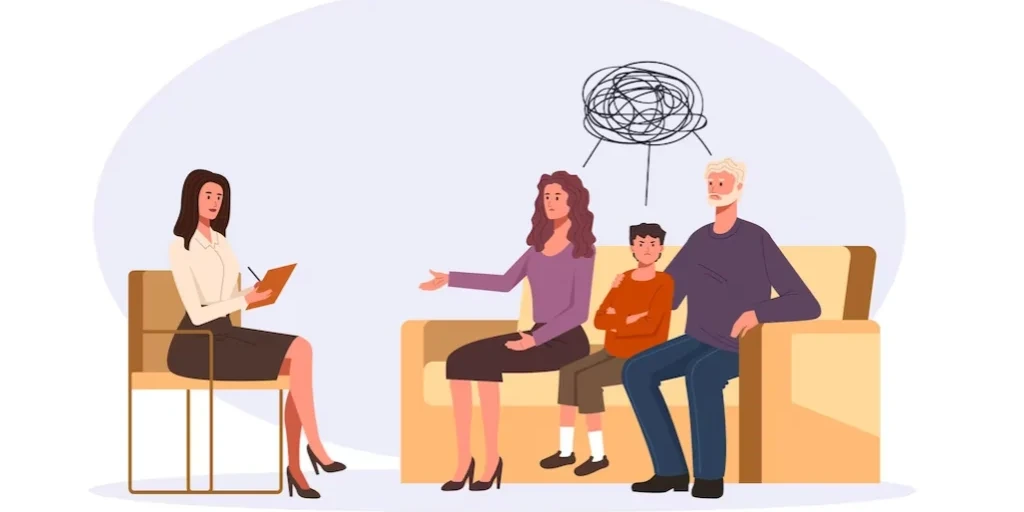
Learn to Live Foundation
Learn to Live Foundation is a private rehab located in Baltimore, Maryland. Learn to Live Foundation...

Yalich Clinic
Yalich Clinic is a private rehab located in Frederick, Maryland. Yalich Clinic specializes in the tr...

Recovery Network – Charles Street
Recovery Network - Charles Street provides a unique opportunity for integrated treatment for those w...

Vesta
Vesta is a private rehab located in Germantown, Maryland. Vesta specializes in the treatment of Ment...

Crawford Consulting and Mental Health
Crawford Consulting and Mental Health is a private rehab located in Hyattsville, Maryland. Crawford ...

Sinepuxent Substance Abuse Services
Sinepuxent Substance Abuse Services is a private rehab located in Ocean City, Maryland. Sinepuxent S...

Rockville Metro Club
Rockville Metro Club is a non-profit rehab located in Rockville, MD. Rockville Metro Club specialize...

Treatment Resources for Youth – Charles Street
Treatment Resource for Youth - Charles Street is a non-profit, adolescent centered substance abuse f...

AA – Alcoholics Anonymous
AA – Alcoholics Anonymous is a non-profit rehab located in Gaithersburg, Maryland. AA – Alcoholics A...

Adventist Behavioral Health Cottage
Adventist Behavioral Health Cottage - Latakia Place is located in North Potomac, Maryland. Adventist...

Project Chesapeake
Project Chesapeake is a private alcohol and drug addiction center that offers individuals a comprehe...
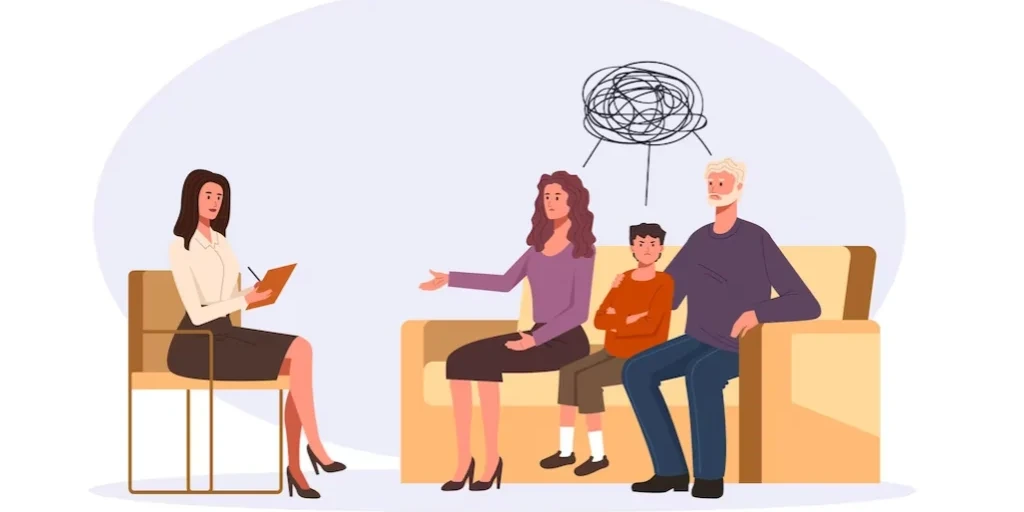
Another Way
Another Way is a private rehab located in Silver Spring, Maryland. Another Way specializes in the tr...

Behavioral Pharmacology Research Unit – BPRU
Behavioral Pharmacology Research Unit (BPRU) is a private rehab located in Baltimore, MD. Behavioral...

Western Maryland Health System – Behavioral Health Services
Western Maryland Health System – Behavioral Health Services is a private rehab located in Cumberland...
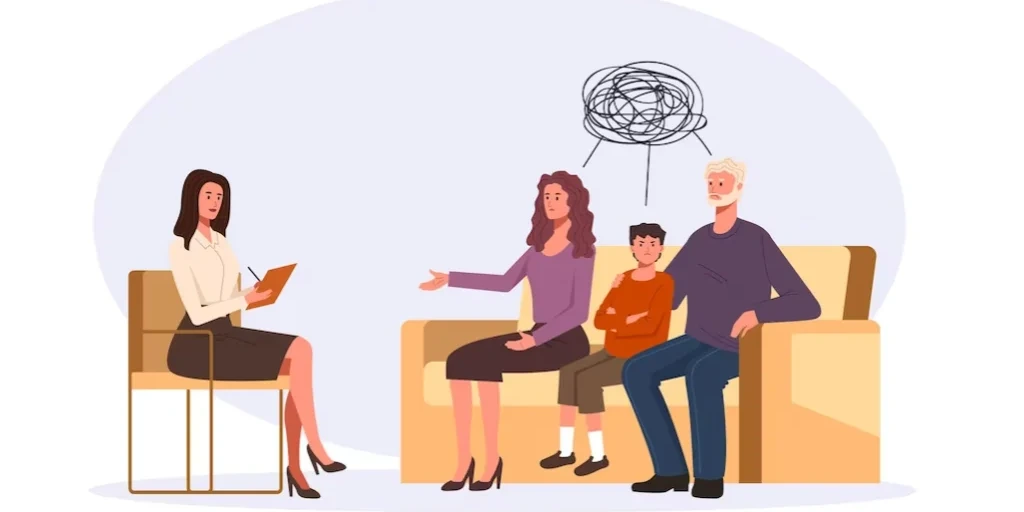
Multicultural Rehabilitation
Multicultural Rehabilitation is a private rehab located in Silver Spring, Maryland. Multicultural Re...

Frederick Counseling Center
Frederick Counseling Center is a private rehab located in Frederick, Maryland. Frederick Counseling ...

Catoctin Counseling Center – 69 East Main Street
Catoctin Counseling Center - 69 East Main Street offers outpatient treatment for individuals with al...
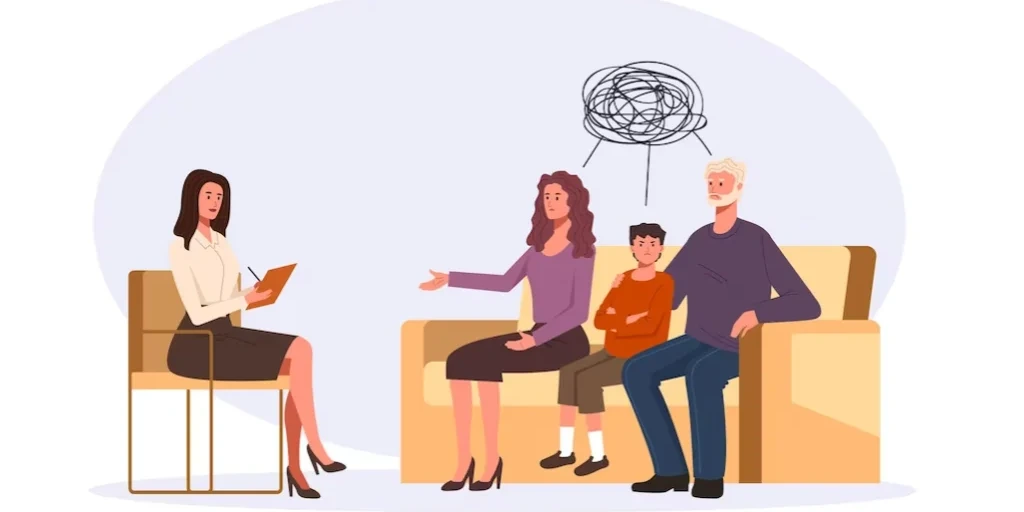
Wholistic Counseling
Wholistic Counseling is a private rehab located in Baltimore, Maryland. Wholistic Counseling special...

We Care Arundel Health Services
We Care Arundel Health Services is a private rehab located in Glen Burnie, Maryland. We Care Arundel...

Corsica River Mental Health Services – CRMHS
Corsica River is a non-profit mental health and substance abuse clinic providing treatment to all mi...

EPOCH Counseling Center East
EPOCH Counseling Center East is a private rehab located in Essex, Maryland. EPOCH Counseling Center ...

Mosaic Behavioral Health
Mosaic Behavioral Health is a private rehab located in Randallstown, Maryland. Mosaic Behavioral Hea...

Family Behavioral Services
Family Behavioral Services is a private rehab located in Hyattsville, Maryland. Family Behavioral Se...

Latino Counseling
Latino Counseling is a private rehab located in Federalsburg, Maryland. Latino Counseling specialize...

Volunteers of Amer Chesapeake – Prince of Wales Court
VOAC - Prince of Wales Court offers inpatient services for individuals with a mental health diagnosi...

Community Outreach Services
Community Outreach Services is a private rehab located in College Park, Maryland. Community Outreach...

Transitioning Lives
Transitioning Lives is a private rehab located in Baltimore, Maryland. Transitioning Lives specializ...

Washington County Health Department Adolescent – Outpatient
Washington County Health Department Adolescent – Outpatient is a public rehab located in Sabillasvil...

Towson Addictions Center
Towson Addictions Center specializes in the treatment of substance abuse related problems. Their ser...

Healthcare Living for Families
Healthcare Living for Families is a private rehab located in Randallstown, Maryland. Healthcare Livi...

Johns Hopkins Broadway Center for Addiction – Wilson House
Johns Hopkins Broadway Center for Addiction - Wilson House is a private rehab located in Baltimore, ...

Fayette House
Fayette House is a private rehab located in Baltimore, Maryland. Fayette House specializes in the tr...

Light of Truth Center
Light of Truth Center is a private rehab located in Baltimore, Maryland. Light of Truth Center speci...

Maple Shade Youth and Family Services
Maple Shade Youth and Family Services is a private rehab located in Princess Anne, Maryland. Maple S...

Delmarva Family Resources
Delmarva Family Resources is a private rehab located in Easton, Maryland. Delmarva Family Resources ...

Wells House – North Locust street
Wells House - North Locust street offers outpatient services for individuals with a Substance Addict...

Chance II Change
Chance II Change is a private rehab located in Baltimore, Maryland. Chance II Change specializes in ...

Carrington House
Carrington House is a private rehab located in Baltimore, Maryland. Carrington House specializes in ...

Turning Corners
Turning Corners offers outpatient services for individuals that are struggling with a Substance Addi...

National Institute for Healthy Behavior
National Institute for Healthy Behavior is a private rehab located in Catonsville, Maryland. Nationa...

AA – Alcoholics Anonymous
AA – Alcoholics Anonymous is a non-profit rehab located in Easton, Maryland. AA – Alcoholics Anonymo...

Mountain Manor Outpatient Services – West Patrick Street
Mountain Manor Outpatient Services - West Patrick Street is located in Frederick, Maryland. Mountain...

AA – Alcoholics Anonymous
AA – Alcoholics Anonymous is a non-profit rehab located in Annapolis, Maryland. AA – Alcoholics Anon...

CAMEO House – Mental Health
CAMEO House – Mental Health is a public rehab located in Hagerstown, Maryland. CAMEO House – Mental ...

Mountain Manor Outpatient Services – Eastern Avenue
Mountain Manor Outpatient Services - Eastern Avenue is located in Baltimore, Maryland. Mountain Mano...

Washington Adventist University – Community Counseling
Washington Adventist University – Community Counseling is a private rehab located in Takoma Park, Ma...

All Addictions Treatment Center
All Addictions Treatment Center is a private rehab located in Baltimore, Maryland. All Addictions Tr...

Journey to Self Understanding
Journey to Self Understanding is an outpatient counseling center for mental health and substance abu...

Eastern Shore Alano Club
Eastern Shore Alano Club is a non-profit rehab located in Chestertown, Maryland. Eastern Shore Alano...

Maple Shade Mental Health Clinic
Maple Shade Mental Health Clinic is a private rehab located in Mardela Springs, Maryland. Maple Shad...

Guidelines Counseling Program
Guidelines Counseling Program is a private rehab located in Frederick, Maryland. Guidelines Counseli...

AA – Alcoholicos Anonimos – Grupo Nueva Vida
AA – Alcoholicos Anonimos – Grupo Nueva Vida is a non-profit rehab located in Gaithersburg, Maryland...

Youth Reaching Out
Youth Reaching Out is a substance abuse and mental health counseling dedicated to provide services f...

Aleks House – District Heights Outpatient
Aleks House – District Heights Outpatient is a private rehab located in Suitland, Maryland. Aleks Ho...

Mosaic Community Services
Mosaic Community Services provides mental health and substance abuse assessments, individual and gro...

Monocacy Counseling Center
Monocacy Counseling Center is a private rehab located in Frederick, Maryland. Monocacy Counseling Ce...

Arundel Lodge – First Step Recovery Program
First Step Recovery Program at Arundel Lodge is certified through the State of Maryland to provide t...

Change Health Systems – Baltimore
Change Health Systems is a community-based wellness center that provides psychiatric recovery, rehab...

Fox Therapy Services
Fox Therapy Services is a private rehab located in Frederick, Maryland. Fox Therapy Services special...

Universal Counseling Services – West Read Street
Universal Counseling Services – West Read Street is a private rehab located in Baltimore, Maryland. ...

Addictions Associates
Addictions Associates LLC offers outpatient treatment for individuals with alcohol and/or substance ...

I Cant We Can Counseling Center
I Cant We Can Counseling Center is a private rehab located in Baltimore, Maryland. I Cant We Can Cou...

Kolmac Outpatient Recovery Centers
Kolmac Outpatient Recovery Centers provide outpatient detoxification, rehabilitation, and continuing...

Loyola College Alcohol and Drug Support Services
Loyola College Alcohol and Drug Support Services offers outpatient services for students dealing wit...

Ryan Rehabilitation
Ryan Rehabilitation is a private rehab located in Kensington, MD. Ryan Rehabilitation specializes in...

No Turning Back
No Turning Back is a private rehab located in Baltimore, Maryland. No Turning Back specializes in th...

I Can’t We Can – Halfway House
I Can’t We Can – Halfway House is a private rehab located in Baltimore, Maryland. I Can’t We Can – H...

Affiliated Sante Group
Affiliated Sante Group is a private rehab located in Lanham, Maryland. Affiliated Sante Group specia...

Anchor Psychology
Anchor Psychology is a private rehab located in Annapolis, Maryland. Anchor Psychology specializes i...

Counseling Resources
Counseling Resources is a private rehab located in Ellicott City, Maryland. Counseling Resources spe...

New Horizons Health Services
New Horizons Health Services is a private rehab located in Laurel, Maryland. New Horizons Health Ser...

Baltimore Prevention Coalition
Baltimore Prevention Coalition is a private rehab located in Baltimore, Maryland. Baltimore Preventi...

Jones Falls Community Outreach
Jones Falls Community Outreach is a private rehab located in Baltimore, Maryland. Jones Falls Commun...

People Encouraging People
People Encouraging People is a private rehab located in Glen Burnie, Maryland. People Encouraging Pe...

Aleks House – Lanham Outpatient
Aleks House – Lanham Outpatient is a private rehab located in Lanham, Maryland. Aleks House – Lanham...

Awele Treatment and Rehab Services
Awele Treatment and Rehab Services is a private rehab located in Baltimore, Maryland. Awele Treatmen...

Community Behavioral Health
Community Behavioral Health is a private rehab located in Centreville, Maryland. Community Behaviora...

Family Therapy Services
Family Therapy Services is a private rehab located in Frostburg, Maryland. Family Therapy Services s...

Go Getters – Main Street
Go Getters – Main Street is a private rehab located in Salisbury, Maryland. Go Getters – Main Street...

Certified Counseling Services
Certified Counseling Services is a private rehab located in Centreville, Maryland. Certified Counsel...

AA – Alcoholics Anonymous
AA – Alcoholics Anonymous is a non-profit rehab located in Laurel, Maryland. AA – Alcoholics Anonymo...

Integrative Counseling
Integrative Counseling is a private rehab located in Glen Burnie, Maryland. Integrative Counseling s...

Dorchester General Hospital – Behavioral Health
Dorchester General Hospital – Behavioral Health is a private rehab located in Cambridge, Maryland. D...

Children and Parents Program
Children and Parents Program is a public rehab located in Capitol Heights, MD. Children and Parents ...
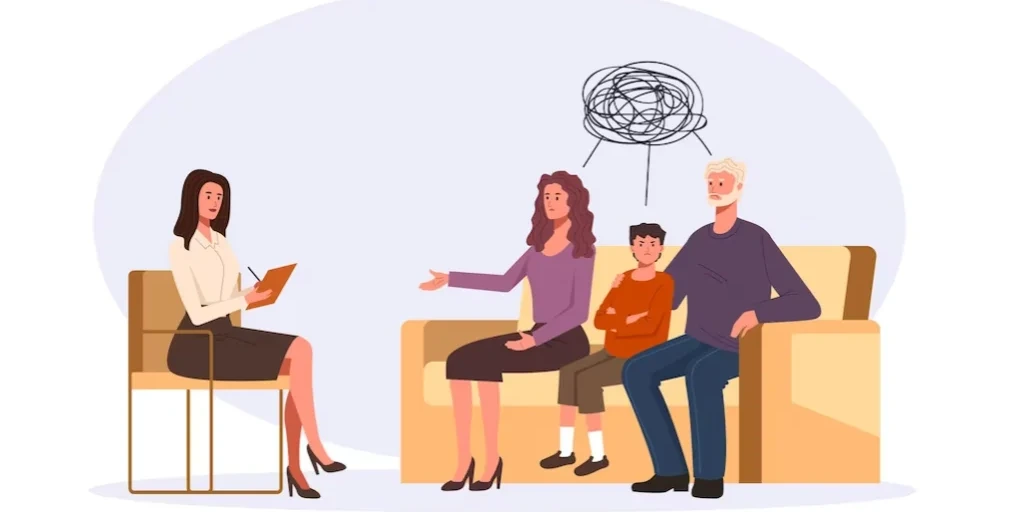
Hunter Behavorial Health Care Services
Hunter Behavorial Health Care Services is a private rehab located in Baltimore, Maryland. Hunter Beh...

Counseling Resource Associates
Counseling Resource Associates is a privately operated counseling clinic that provides services for ...

Bergand Group
Bergand Group is a private rehab located in Fallston, Maryland. Bergand Group specializes in the tre...

MENTOR Maryland
MENTOR Maryland is a private rehab located in Catonsville, Maryland. MENTOR Maryland specializes in ...

Alcohol and Drug Abuse Program
Alcohol and Drug Abuse Program is a private rehab located in Baltimore, Maryland. Alcohol and Drug A...

Hope Health
Hope Health is a private rehab located in Gwynn Oak, Maryland. Hope Health specializes in the treatm...

Friendship House
Friendship House is a private rehab located in Baltimore, Maryland. Friendship House specializes in ...

Bridge House
Bridge House offers inpatient and outpatient treatment for individuals with alcohol and/or substance...

RCI Counseling – Outpatient
RCI Counseling – Outpatient is a private rehab located in Dundalk, Maryland. RCI Counseling – Outpat...

Oxford House – Charmuth
Oxford House – Charmuth is a private rehab located in Towson, Maryland. Oxford House – Charmuth spec...

MedMark Treatment Centers – Giles Road
MedMark Treatment Centers - Giles Road offers outpatient treatment for individuals with an opiate ad...

Nascott Rehabilitation Services
Nascott Rehabilitation Services is a private rehab located in Frederick, Maryland. Nascott Rehabilit...

Turning Corners
Turning Corners is a private rehab located in Baltimore, Maryland. Turning Corners specializes in th...

Recovery in Community
Recovery in Community is a private rehab located in Baltimore, Maryland. Recovery in Community speci...
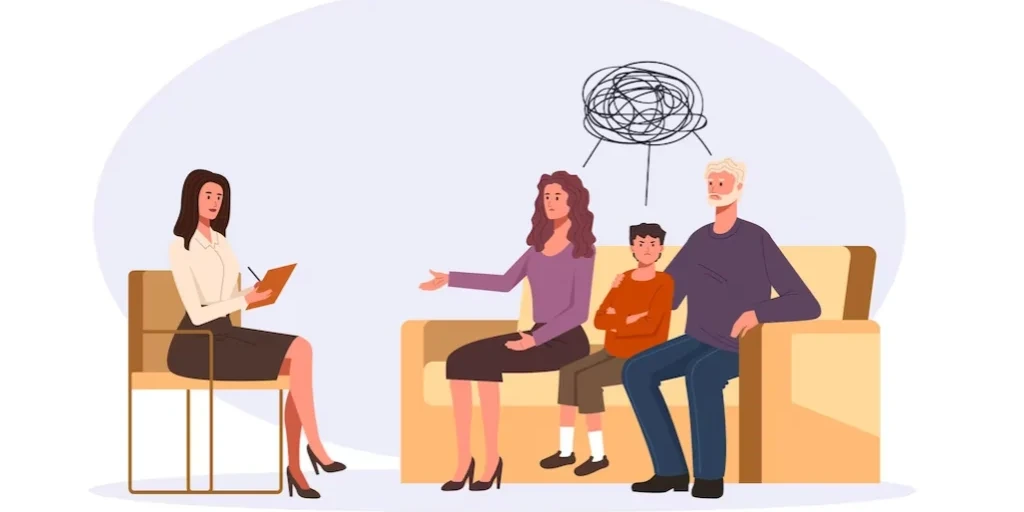
Safe Sober Recovery
Safe Sober Recovery is a private rehab located in Havre De Grace, Maryland. Safe Sober Recovery spec...

Friend and Family House
Friend and Family House is a private rehab located in Baltimore, Maryland. Friend and Family House s...

Acorn Counseling Center
Acorn Counseling Center is a private rehab located in Cumberland, Maryland. Acorn Counseling Center ...

Wicomico Behavioral Health
Wicomico Behavioral Health is a private rehab located in Salisbury, Maryland. Wicomico Behavioral He...

Club 857
Club 857 is a private rehab located in Baltimore, Maryland. Club 857 specializes in the treatment of...

CA Mayo and Associates
CA Mayo and Associates is a private rehab located in Mount Rainier, Maryland. CA Mayo and Associates...

Counseling Associates
Counseling Associates is a private rehab located in Salisbury, Maryland. Counseling Associates speci...

Adventist HealthCare Behavioral Health and Wellness Services – Washington Adventist Hospital
Adventist HealthCare Behavioral Health and Wellness Services - Washington Adventist Hospital is loca...

Young Adult Institute
Young Adult Institute is a private rehab located in Windsor Mill, Maryland. Young Adult Institute sp...

All Walks of Life
All Walks of Life is a private rehab located in Baltimore, Maryland. All Walks of Life specializes i...

Alcoholism Inpatient
Alcoholism Inpatient is a private rehab located in Westminster, Maryland. Alcoholism Inpatient speci...

TRW Associates
TRW Associates is a private rehab located in Bel Air, Maryland. TRW Associates specializes in the tr...

People Encouraging People
People Encouraging People is a private rehab located in Hyattsville, Maryland. People Encouraging Pe...

Seafarers Addiction Rehabilitation Center – SARC
Seafarers Addiction Rehabilitation Center (SARC) offers a residential treatment program for the Unit...

White Flint Recovery
White Flint Recovery is a private rehab located in Ocean City, Maryland. White Flint Recovery specia...

Regenerations Counseling Services
Regenerations Counseling Services is a private rehab located in Halethorpe, Maryland. Regenerations ...

Alcohol and Drug Recovery
Alcohol and Drug Recovery is the oldest free-standing outpatient treatment center in the area. Alcoh...

Re Entry Mental Health Services
Re-Entry Mental Health Services offers family, couples, group and individual therapy, the facility i...

White Flint Recovery
White Flint Recovery is a private rehab located in Salisbury, Maryland. White Flint Recovery special...

Bilingual Counseling Center
Bilingual Counseling is an outpatient facility that provides Assessments, Education and Treatment fo...

Comprehensive Treatment Center
Comprehensive Treatment Center is a private rehab located in Millersville, Maryland. Comprehensive T...

Robert A. Pascal Youth & Family Services
Robert A. Pascal Youth & Family Services is a private rehab located in Severna Park, Maryland. Rober...

Cornerstone Montgomery
Cornerstone Montgomery is a private rehab located in Silver Spring, Maryland. Cornerstone Montgomery...

New Vision Behavioral Health Service
New Vision Behavioral Health Service is a private rehab located in Baltimore, Maryland. New Vision B...

Eastern Shore Psychological
Eastern Shore Psychological is a private rehab located in Salisbury, Maryland. Eastern Shore Psychol...

Phoenix Therapeutic Foundation
Phoenix Therapeutic Foundation is a private rehab located in Catonsville, Maryland. Phoenix Therapeu...

Clean Slate Recovery
Clean Slate Recovery is a private rehab located in Baltimore, Maryland. Clean Slate Recovery special...

The Ragpicker
The Ragpicker is a non-profit rehab located in Parkville, Maryland. The Ragpicker specializes in the...

Family Health Center – Psychological Services
Family Health Center – Psychological Services is a private rehab located in Gaithersburg, Maryland. ...

Insight Treatment Centers
Insight Treatment Centers is a private rehab located in Suitland, Maryland. Insight Treatment Center...

Wells House – 608 East Patrick street
Wells House - 608 East Patrick Street is a dual diagnosis addiction treatment center for adults, loc...

Quarter Way Houses
Quarter Way Houses is a private rehab located in Baltimore, Maryland. Quarter Way Houses specializes...

New Vision Behavioral Health Services
New Vision Behavioral Health Services is a private rehab located in Baltimore, Maryland. New Vision ...

Noahs Ark Treatment Center
Noahs Ark Treatment Center is a private rehab located in Annapolis, Maryland. Noahs Ark Treatment Ce...

Recovery Network Halfway Houses Program
Recovery Network Halfway Houses Program is a private rehab located in Baltimore, Maryland. Recovery ...

The Weber Addiction Group
The Weber Addiction Group is a private rehab located in Westminster, Maryland. The Weber Addiction G...

House of Hope – Tova House
House of Hope – Tova House is a private rehab located in Baltimore, Maryland. House of Hope – Tova H...

TRW Associates
TRW Associates is a private rehab located in Havre De Grace, Maryland. TRW Associates specializes in...

Carver Community Counseling Services
Carver Community Counseling Services is a private rehab located in Cumberland, Maryland. Carver Comm...

Volunteers of America – Mental Health and Rehab
Volunteers of America – Mental Health and Rehab is a private rehab located in Lanham, Maryland. Volu...

Brook Lane – Frederick Outpatient
Brook Lane – Frederick Private Rehab is a facility that helps individuals with co-occurring disorder...

Institute for Family Centered Services
Institute for Family Centered Services is a private rehab located in Halethorpe, Maryland. Institute...

Harford Counseling
Harford Counseling is a private rehab located in Bel Air, MD. Harford Counseling specializes in the ...

Wells House – 336 North Market street
Wells House - 336 North Market street offers inpatient and outpatient services for individuals with ...

AA – Alcoholics Anonymous
AA – Alcoholics Anonymous is a non-profit rehab located in Baltimore, Maryland. AA – Alcoholics Anon...

Anne Arundel Counseling
Anne Arundel Counseling is a private rehab located in Glen Burnie, MD. Anne Arundel Counseling speci...

Maryland Family Resource
Maryland Family Resource is a private rehab located in Hyattsville, Maryland. Maryland Family Resour...

People’s Community Health Center
People’s Community Health Center is a private rehab located in Baltimore, Maryland. People’s Communi...

AA – Alcoholics Anonymous
AA – Alcoholics Anonymous is a non-profit rehab located in Salisbury, Maryland. AA – Alcoholics Anon...

DWI Long Term Residential Facility
DWI Long Term Residential Facility is a private rehab located in Baltimore, Maryland. DWI Long Term ...

Counseling Associates
Counseling Associates is a private rehab located in Berlin, Maryland. Counseling Associates speciali...

AA – Alcoholicos Anonimos – Grupo Nuevo Amanecer
Alcoholicos Anonimos (AA) - Grupo Nuevo Amanecer is located in Rockville, Maryland. Alcoholicos Anon...

Somerset County Behavioral Health
Somerset County Behavioral Health is a public rehab located in Westover, Maryland. Somerset County B...

Walden
Walden’s mission is to contribute to the well being of the Southern Maryland community by providing ...

Alternative Drug and Alcohol Counseling – ADAC
Alternative Drug and Alcohol Counseling – ADAC is a private rehab located in Cumberland, Maryland. A...

Contemporary Counseling Services
Contemporary Counseling Services is a private rehab located in Westminster, Maryland. Contemporary C...

EPOCH Counseling Center West
EPOCH Counseling Center West is a private rehab located in Catonsville, Maryland. EPOCH Counseling C...

MedMark Treatment Centers – Baltimore 101
MedMark Treatment Centers - North Eutaw Street offers outpatient treatment for individuals with an o...

Affordable Behavioral Consultants
Affordable Behavioral Consultants is a private rehab located in Upper Marlboro, Maryland. Affordable...

SAFE Sober Recovery
SAFE Sober Recovery is a private rehab located in Aberdeen, Maryland. SAFE Sober Recovery specialize...

Alternatives to Dependency
Alternatives to Dependency provides substance abuse treatment in an outpatient manner for individual...

AA – Alcoholics Anonymous – Grupo 11 de Febrero
Alcoholics Anonymous (AA) - Grupo 11 de Febrero is an group meeting based on the 12-step philosophy ...

Alcohol and Drug Recovery
Alcohol and Drug Recovery is the oldest free-standing outpatient treatment center in the area. Alcoh...

Druid Heights Treatment and Counseling Center
Druid Heights Treatment and Counseling Center is a private rehab located in Baltimore, Maryland. Dru...

Corsica River Mental Health Services – CRMHS
Corsica River is a non-profit mental health and substance abuse clinic providing treatment to all mi...

Universal Counseling Services
Universal Counseling Services is a private rehab located in Baltimore, Maryland. Universal Counselin...

AA – Alcoholics Anonymous – Primero de Marzo
Alcoholics Anonymous (AA) - Primero de Marzo is located in Silver Spring, Maryland. Alcoholics Anony...

S and S Counseling Services
S and S Counseling Services is an outpatient treatment program for individuals struggling with chemi...

Reformers Unanimous Addictions Program
Reformers Unanimous Addictions Program is a private rehab located in Salisbury, Maryland. Reformers ...

Partners in Recovery
Partners in Recovery serves adults with substance use issues who are committed to seeking positive a...

I Can – Oasis
I Can – Oasis is a private rehab located in Baltimore, Maryland. I Can – Oasis specializes in the tr...

Warwick Manor Behavioral Health
Warwick Manor Behavioral Health (WMBH) is a dual diagnosis substance abuse treatment center located ...

Riker McKenzie Holistic Treatment Center
Riker McKenzie Holistic Treatment Center is a private rehab located in Baltimore, Maryland. Riker Mc...

Reality Outpatient
Reality Outpatient is a private rehab located in Laurel, Maryland. Reality Outpatient specializes in...

Addiction Treatment Systems – Another Way
Addiction Treatment Systems - Another Way is a private, traditional rehab located in Takoma Park, MD...

Glass Health Programs
Glass Health Programs is a private rehab located in Baltimore, Maryland. Glass Health Programs speci...

Waldorf Professional Counseling Services
Waldorf Professional Counseling Services is a private rehab located in Waldorf, Maryland. Waldorf Pr...

Vesta
Vesta is a private rehab located in District Heights, Maryland. Vesta specializes in the treatment o...

Thomas Comprehensive Counseling Services
Thomas Comprehensive Counseling Services is a private rehab located in Silver Spring, Maryland. Thom...

Ryan Rehabilitation
Ryan Rehabilitation is a private rehab located in Suitland, Maryland. Ryan Rehabilitation specialize...

Courage to Change
Courage to Change is a private rehab located in Prince Frederick, Maryland. Courage to Change specia...

Eastern Shore Psychological
Eastern Shore Psychological is a private rehab located in Princess Anne, Maryland. Eastern Shore Psy...

National Institute on Drug Abuse – Archway
National Institute on Drug Abuse - Archway is a research facility in Baltimore, Maryland. National I...

Walden – North Star/ Compass
Walden - North Star/ Compass offers alcohol and drug treatment to fit the individualized needs of bo...

Bon Secours – Behavioral Health
Bon Secours - Behavioral Health offers outpatient, intensive outpatient, and partial hospitalization...

Urban Counseling Institute
Urban Counseling Institute is a private rehab located in Temple Hills, MD. Urban Counseling Institut...

Safe Haven Counseling Center
Safe Haven Counseling Center is a private rehab located in Hagerstown, Maryland. Safe Haven Counseli...

1st Alternative Counseling
1st Alternative Counseling is a private rehab located in Owings Mills, Maryland. 1st Alternative Cou...

Changing Turn
Changing Turn is a dual diagnosis substance abuse and behavioral health treatment center in Edgewood...

The Mentor Network – Family Centered Treatment
The Mentor Network – Family Centered Treatment is a private rehab located in Gaithersburg, Maryland....

Collington Square – Substance Abuse Counseling
Collington Square - Substance Abuse Counseling is a non-profit counseling clinic located in Baltimor...

Mountain Manor – The Shoemaker Center
Mountain Manor - The Shoemaker Center, located on the grounds of the Springfield Hospital Center in ...

Maple Shade Youth and Family Services
Maple Shade Youth and Family Services is a private rehab located in Crisfield, Maryland. Maple Shade...

Serenity Acres
Serenity Acres is an exclusive luxury residential treatment center for individuals struggling with c...

Powell Recovery Center
Powell Recovery Center in Baltimore, Maryland, is a full service alcohol and drug rehab facility. Th...

House of Hope
House of Hope is a private rehab located in Baltimore, Maryland. House of Hope specializes in the tr...

Junction
Junction is a private rehab located in Westminster, Maryland. Junction specializes in the treatment ...

Family Vision
Family Vision is a private rehab located in Pikesville, Maryland. Family Vision specializes in the t...

Fields and Fields Treatment Center
Fields and Fields Treatment Center is a private rehab located in District Heights, Maryland. Fields ...

Counseling Association – Gateway Behavioral Health
Counseling Association – Gateway Behavioral Health is a private rehab located in Salisbury, Maryland...

Adventist Behavioral Health Cottage
Adventist Behavioral Health Cottage - Kipling Road is located in Derwood, Maryland. Adventist Behavi...

Build Fellowship
Build Fellowship is a private rehab located in Baltimore, Maryland. Build Fellowship specializes in ...

Hebron House
Hebron House is a private rehab located in Baltimore, Maryland. Hebron House specializes in the trea...

Metwork Health Services
Metwork Health Services is a private rehab located in Sykesville, Maryland. Metwork Health Services ...

VOAC – Prince Georges Mental Health
VOAC - Elm Avenue offers inpatient services for individuals with a mental health diagnosis. The prog...

People Encouraging People
People Encouraging People is a private rehab located in Gwynn Oak, Maryland. People Encouraging Peop...

Urban Behavioral Associates
Urban Behavioral Associates is a private rehab located in Baltimore, Maryland. Urban Behavioral Asso...

Bridging the Gap Services
Bridging the Gap Services is a private rehab located in Baltimore, Maryland. Bridging the Gap Servic...

Eastern Shore Psychological
Eastern Shore Psychological Services is a private for Profit Limited Liability Company devoted to ex...

Rock Creek Foundation
Rock Creek Foundation is a non-profit rehab located in Silver Spring, Maryland. Rock Creek Foundatio...

Maryland Counseling Centers
Maryland Counseling Centers is a private rehab located in Rockville, Maryland. Maryland Counseling C...

Serenity Health
Serenity Health, located in Aberdeen, Maryland, provides alcohol and drug rehab services and mental ...

Boundless Innovations for Holistic Living
Boundless Innovations for Holistic Living is a private rehab located in Baltimore, Maryland. Boundle...

Johns Hopkins – Wilson Faith Houses
Johns Hopkins – Wilson Faith Houses is a private rehab located in Baltimore, Maryland. Johns Hopkins...

Harbor of Grace Enhanced Recovery Center
Harbor of Grace Enhanced Recovery Center is a comprehensive continuum of care destination for indivi...

Adventist HealthCare Behavioral Health and Wellness Services
Adventist HealthCare Behavioral Health and Wellness Services - Gateway Center Drive is located in Cl...

Mountain Manor Outpatient Services – Thomas Johnson Drive
Mountain Manor Outpatient Services - Thomas Johnson Drive is located in Frederick, Maryland. Mountai...

Mountain Manor – Safe Passages
Mountain Manor - Safe Passages is located in Cheverly, Maryland. Mountain Manor - Safe Passages offe...

Chesapeake Treatment Centers – New Directions Program
Chesapeake Treatment Centers - New Directions Program is located on the grounds of Charles H. Hickey...

Hudson Health Services – Chestnut Street Transitional House
Hudson Health Services - Chestnut Street Transitional House is located in Salisbury, Michigan. Hudso...

Hudson Health Services – Walnut Street Transitional House
Hudson Health Services - Walnut Street Transitional House is located in Salisbury, Michigan. Hudson ...

Hudson Health Services – Corinthian House
Hudson Health Services - Corinthian House is located in Georgetown, Michigan. Hudson Health Services...

Hudson Health Services – Union
Hudson Health Services - Union is located in Salisbury, Michigan. Hudson Health Services - Union is ...

Loch Raven Mental Health Satellite Clinic at McVets
Loch Raven Mental Health Satellite Clinic at McVets is located in Baltimore, Maryland. Loch Raven Me...
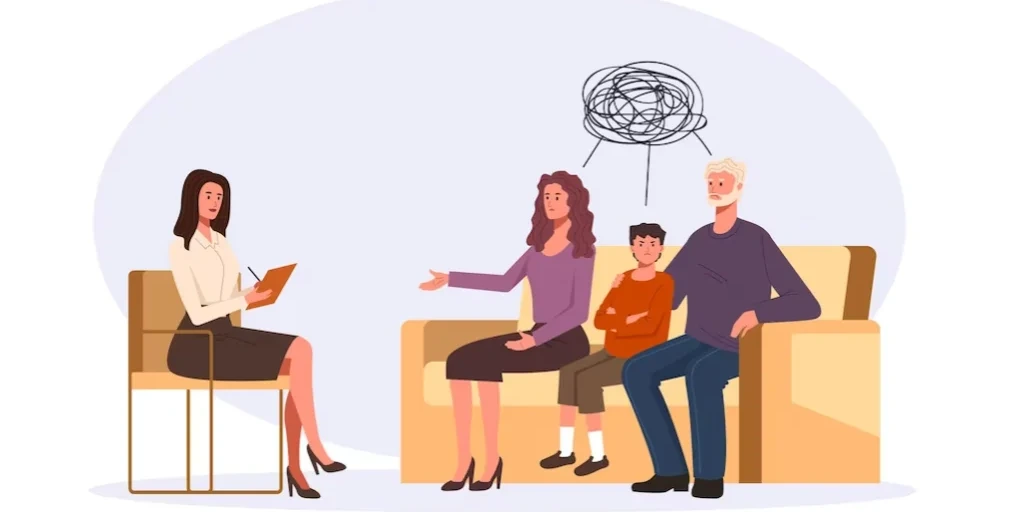
Catoctin Counseling Center – 69 East Main St.
Catoctin Counseling Center - 69 East Main St. offers outpatient treatment for individuals with alcoh...

Journey to Self Understanding
Journey to Self Understanding is an outpatient counseling center for mental health and substance abu...

Bon Secours – ACT and New Phases
Bon Secours - ACT/New Phases provides mental health and case management, as well as outreach service...

Ross Center
Ross Center - Market Street offers outpatient treatment for individuals with alcohol and/or substanc...

Serenity Acres – Stephens Wood Drive
Serenity Acres - Stephens Wood Drive is exclusive luxury residential treatment center for individual...

Serenity Acres – 2009 St. Stephens Wood Drive
Serenity Acres - 2009 St. Stephens Wood Drive is exclusive luxury residential treatment center for i...

Serenity Acres – 2017 Martins Grant Court
Serenity Acres - 2017 Martins Grant Court is exclusive luxury residential treatment center for indiv...

Serenity Acres – 2021 Martins Grant Court
Serenity Acres - 2021 Martins Grant Court is exclusive luxury residential treatment center for indiv...

Allied Counseling Group
Allied Counseling Group - Paden Avenue offers outpatient treatment for individuals with alcohol and/...

Corsica River Mental Health Services – CRMHS
Corsica River is a non-profit mental health and substance abuse clinic providing treatment to all mi...

For All Seasons
For All Seasons provides a full continuum of bilingual outpatient behavioral health services and off...

For All Seasons
For All Seasons provides a full continuum of bilingual outpatient behavioral health services and off...

Changing Turn – York Road
Changing Turn - York Road offers mental health outpatient services to teens, young adults and adults...

Changing Turn – Fredwall Avenue
Changing Turn - Fredwall Avenue offers mental health outpatient services to teens, young adults and ...

Center for Children
Center for Children is a private non-profit rehab located in La Plata, MD. Center for Children offer...

Center for Children – West Street
Center for Children is a private non-profit rehab located in Annapolis, MD. Center for Children offe...

Kolmac Outpatient Recovery Centers
Kolmac Outpatient Recovery Centers provide outpatient detoxification, rehabilitation, and continuing...

Foundations Recovery Center
Foundations Recovery Center offers a Partial Hospitalization Program, an Intensive Outpatient Progra...

Yudaguru Integrative Wellness
Yudaguru Integrative Wellness is a counseling center located in Ellicott City, Maryland. Lead by Abh...

Mi Casa es su Casa Behavioral Health Program
Mi Casa es su Casa Behavioral Health Program is a private rehab located in Baltimore, Maryland. Mi C...

Psychotherapeutic Treatment Services
Psychotherapeutic Treatment Services is a private rehab located in Havre De Grace, Maryland. Psychot...
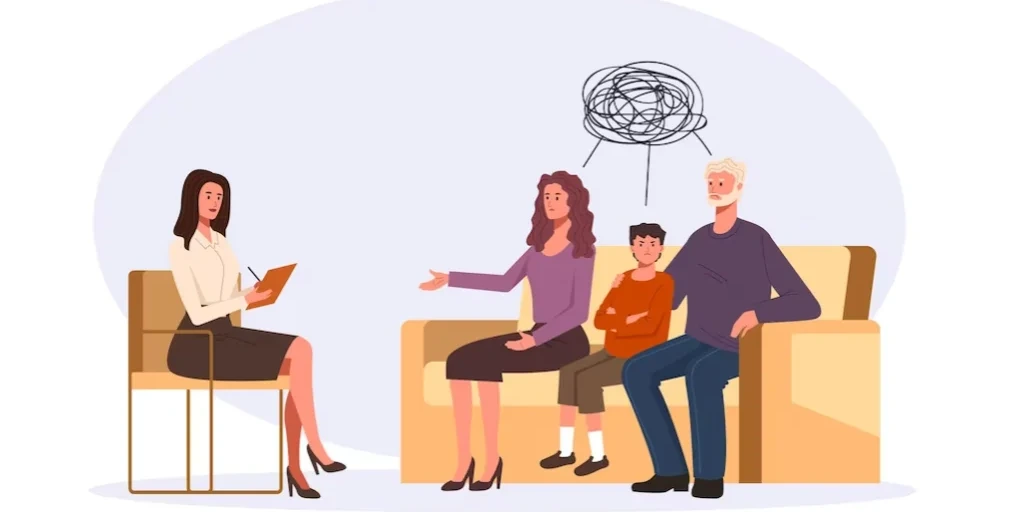
Lantern Therapeutic Services
Lantern Therapeutic Services is a private rehab located in Taneytown, Maryland. Lantern Therapeutic ...

National Institutes of Health Hatfield Clinical Rehabilitation
National Institutes of Health Hatfield Clinical Rehabilitation is a private rehab located in Bethesd...

Contemporary Family Services
Contemporary Family Services is a private rehab located in Hyattsville, Maryland. Contemporary Famil...

A Quiet Journey Counseling Associates
A Quiet Journey Counseling Associates is a private rehab located in Silver Spring, Maryland. A Quiet...

Quince Orchard Psychotherapy
Quince Orchard Psychotherapy is a private rehab located in Germantown, Maryland. Quince Orchard Psyc...

Metropolitan Counseling Associates
Metropolitan Counseling Associates is a private rehab located in Bethesda, Maryland. Metropolitan Co...

Balance Point Wellness – Nottingham
Balance Point Wellness – Nottingham is a private rehab located in Nottingham, Maryland. Balance Poin...

Balance Point Wellness – Bel Air
Balance Point Wellness - Bel Air provides mental health and behavioral health care services to indiv...

Behavioral Health Partners of Frederick – Patrick Street
Behavioral Health Partners of Frederick – Patrick Street is a private rehab located in Frederick, Ma...

Care & Connections for Families
Care & Connections for Families is a private rehab located in Rockville, Maryland. Care & Connection...

Sheppard Pratt – Psychiatric Rehabilitation Day Program – Belcamp
Sheppard Pratt – Psychiatric Rehabilitation Day Program – Belcamp is a private rehab located in Belc...

Sheppard Pratt – Psychiatric Rehabilitation Day Program – Lanham
Sheppard Pratt – Psychiatric Rehabilitation Day Program – Lanham is a private rehab located in Lanha...

Bright Futures Ahead
Bright Futures Ahead is a private rehab located in Baltimore, Maryland. Bright Futures Ahead special...

Bicycle Health – Maryland
Bicycle Health - Maryland is an online Medication Assisted Treatment Program. Bicycle Health - Maryl...

Corsica River Mental Health Services – CRMHS Chestertown
Corsica River is a non-profit mental health and substance abuse clinic providing treatment to all mi...

Corsica River Mental Health Services – CRMHS Cambridge
Corsica River is a non-profit mental health and substance abuse clinic providing treatment to all mi...

CBH Salisbury: Wicomico County (PRP/IOP/PHP)
CBH Salisbury: Wicomico County (PRP/IOP/PHP) is a public rehab located in Salisbury, Maryland. CBH S...

CBH Princess Anne: Somerset County
CBH Princess Anne: Somerset County is a public rehab located in Princess Anne, Maryland. CBH Princes...

CBH Easton: Talbot County
CBH Easton: Talbot County is a public rehab located in Easton, Maryland. CBH Easton: Talbot County s...

CBH Denton: Caroline County
CBH Denton: Caroline County is a public rehab located in Denton, Maryland. CBH Denton: Caroline Coun...

CBH Columbia: Howard County
CBH Columbia: Howard County is a public rehab located in Columbia, Maryland. CBH Columbia: Howard Co...

CBH Chestertown: Kent County
CBH Chestertown: Kent County is a public rehab located in Chestertown, Maryland. CBH Chestertown: Ke...

DiscoveryMD – White Marsh
DiscoveryMD of White Marsh, Maryland, offers treatment options for depression, anxiety and other out...

Alcohol and Drug Abuse
Alcohol and Drug Abuse is a private rehab located in Easton, Maryland. Alcohol and Drug Abuse specia...

Therapeutic Solutions
Therapeutic Solutions is a private rehab located in Baltimore, Maryland. Therapeutic Solutions speci...

Brittneys Heart
Brittneys Heart is a private rehab located in Baltimore, Maryland. Brittneys Heart specializes in th...

Hart Group
Hart Group is a private rehab located in Parkville, Maryland. Hart Group specializes in the treatmen...

John Gildner Regional – Adolescents
John Gildner Regional – Adolescents is a public rehab located in Rockville, Maryland. John Gildner R...

AA – Alcoholics Anonymous – Fe y Accion
Alcoholics Anonymous (AA) - Fe y Accion is located in Silver Spring, Maryland. Alcoholics Anonymous ...

Better Way Counseling Services
Better Way Counseling Services is a private rehab located in Columbia, MD. Better Way Counseling Ser...

Pressley Ridge – Outpatient
Pressley Ridge – Outpatient is a private rehab located in Baltimore, Maryland. Pressley Ridge – Outp...

Women In Treatment Services
Women In Treatment Services is a public rehab located in Hagerstown, Maryland. Women In Treatment Se...

Center for Addiction at John Hopkins
Center for Addiction at Johns Hopkins is a drug and alcohol rehab and medical facility in Baltimore,...

No Turning Back – Behavioral Health
No Turning Back – Behavioral Health is a private rehab located in Baltimore, Maryland. No Turning Ba...

Changing Cycle
Changing Cycle is a private rehab located in Waldorf, Maryland. Changing Cycle specializes in the tr...

Hannahs Aftercare
Hannahs Aftercare is a private rehab located in Silver Spring, Maryland. Hannahs Aftercare specializ...
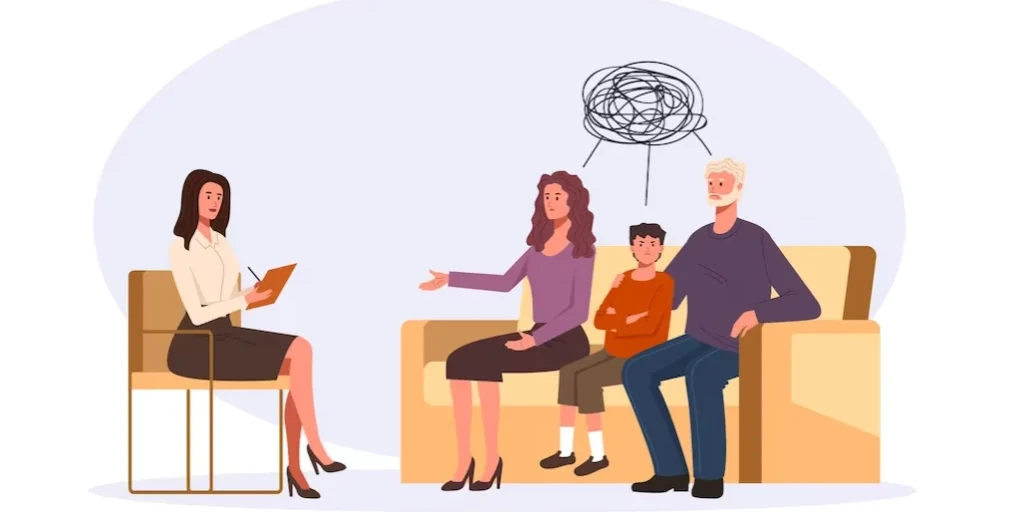
Delta Rehabilitation Center
Delta Rehabilitation Center is a private rehab located in Baltimore, Maryland. Delta Rehabilitation ...

Millennium Health and Rehabilitation Center
Millennium Health and Rehabilitation Center is a private rehab located in Silver Spring, Maryland. M...

Adult Addiction Clinic
Adult Addiction Clinic is a private rehab located in Annapolis, Maryland. Adult Addiction Clinic spe...

QCI Behavioral Health
QCI Behavioral Health is a private rehab located in Hagerstown, Maryland. QCI Behavioral Health spec...

Counseling Services
Counseling Services is a private rehab located in Laurel, Maryland. Counseling Services specializes ...

Villa Maria of Frederick County – Child and Family Services
Villa Maria of Frederick County – Child and Family Services is a private rehab located in Frederick,...

Allcare Treatment Services
Allcare Treatment Services is a private rehab located in Glen Burnie, Maryland. Allcare Treatment Se...

Alcohol and Drug Abuse Education – The Horizons
Alcohol and Drug Abuse Education – The Horizons is a private rehab located in Pasadena, Maryland. Al...

Gaudenzia
Gaudenzia is located in Crownsville, Maryland. Gaudenzia offers a continuum of care to adults dealin...

Kolmac Outpatient Recovery Centers
Kolmac Outpatient Recovery Centers provide outpatient detoxification, rehabilitation, and continuing...

Project Chesapeake
Project Chesapeake is a private addiction, substance abuse, and mental health counseling organizatio...

REK Advanced Therapeutic Solutions
REK Advanced Therapeutic Solutions offer the integrative medicine approach by mixing a substance use...

Walden
Walden, now Pyramid Healthcare, is a drug and alcohol rehab facility in Charlotte Hall, Maryland. Th...

Wells House – 128 E. Baltimore Street
Wells House - 128 E. Baltimore Street offers inpatient and outpatient services for individuals with ...

Recovery Network
Recovery Network offers inpatient and outpatient services for individuals dealing with alcohol and/o...

Mosaic Community Services
Mosaic Community Services provides mental health and substance abuse assessments, individual and gro...

Change Health Systems – Hagerstown
Change Health Systems is a community-based wellness center that provides psychiatric recovery, rehab...

Catoctin Counseling Center
Catoctin Counseling Center - East Main Street offers outpatient treatment for individuals with alcoh...

Catoctin Counseling Center – E Main St.
Catoctin Counseling Center - E Main St. offers outpatient treatment for individuals with alcohol and...



































